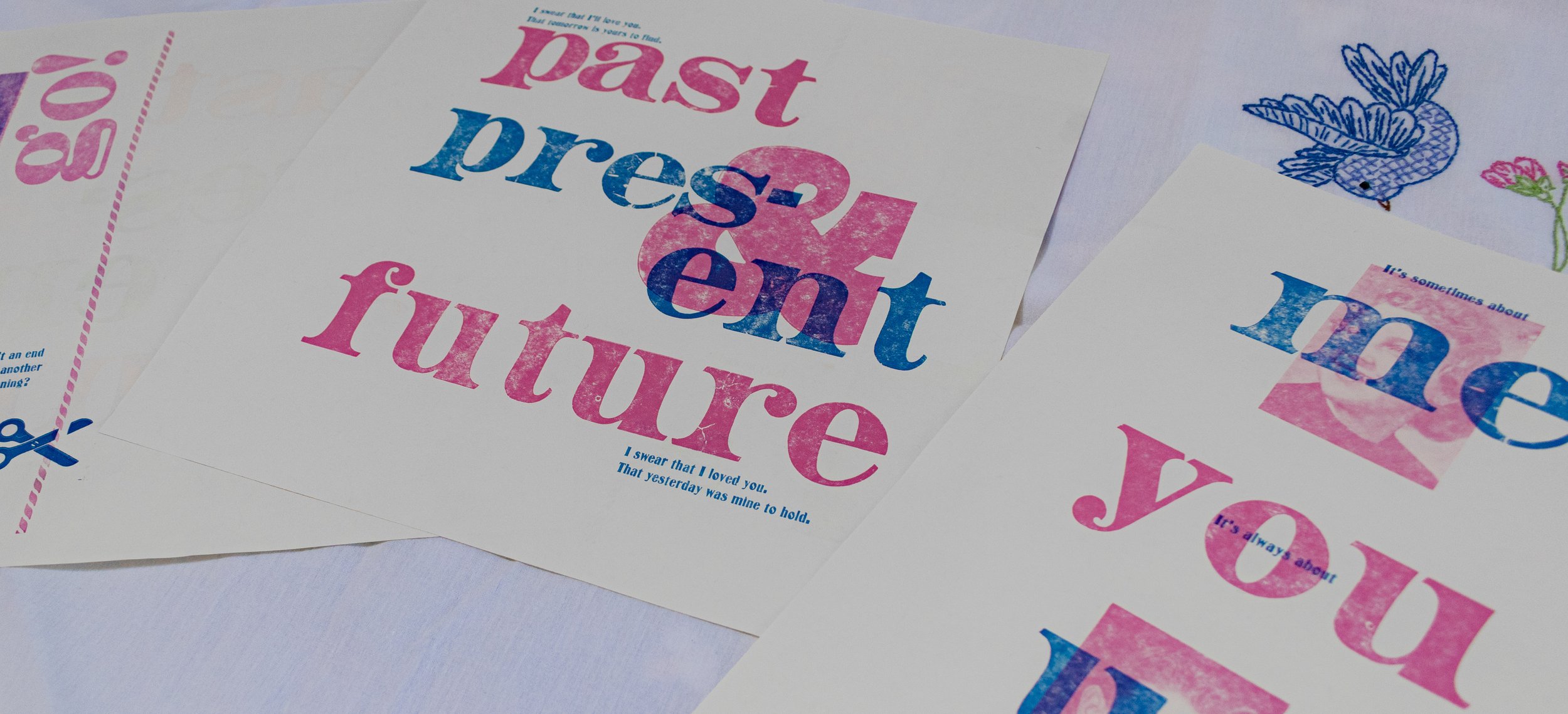
Exploring indexicality in fold
“Indexicality” is a word used in the linguistic world to define when a sentences features a word or phrase that is only true within a certain context, e.x. “My name is Gratia” is a truth when I say it, but becomes a falsehood if another person who does not have my name uses it. Pronouns are especially important in indexical sentences, as words like “you” and “me” depend on the context on a sentence; aside from pronouns, the tense of words are a great example of indexicality as one would never use the past tense in their phrasing in order to talk about the present or future, and vice versa, ex. “I saw you”, “I see you”, and “I will see you”. My fold design, along with my classmates, was then placed into a book about Indexicality that we hand crafted together using the Japanese stab binding technique.
I knew from the beginning I wanted to depict what seems to be the falling out of a relationship, but no context might be given as to why the relationship has gone sour. Here, the reader can create their own reasonings, possibly based on their own experiences, as to why this couple has decided to part. I also considered how the end of one story, the final decision, can end up becoming the opening factor of another story entirely. The scissors on this fold were created with a polymer plate while the rope was a traditionally printed linotype.
My first idea was to play with how pronouns in a sentence can be interpreted and contextualized differently depending on the viewer. The front page presents a pair of vintage halftone portraits, slightly obscured by the the words, and complete strangers to the viewer. The audience gets to determine the context; is “you” the reader? Does it refer to someone they know? Or does it refer to one of the portraits presented, in which case which portrait do they feel it is?
The inside fold plays with tenses, which is made obvious by the large “past, present, & future” set using wood type paired with the smaller metal type sentences that use tense language. It ties the two previous pages together, using pronouns and speaking on beginnings and ends, all while focusing on how a simple change of a words tense heavily influences the emotion and mood of sentence.



